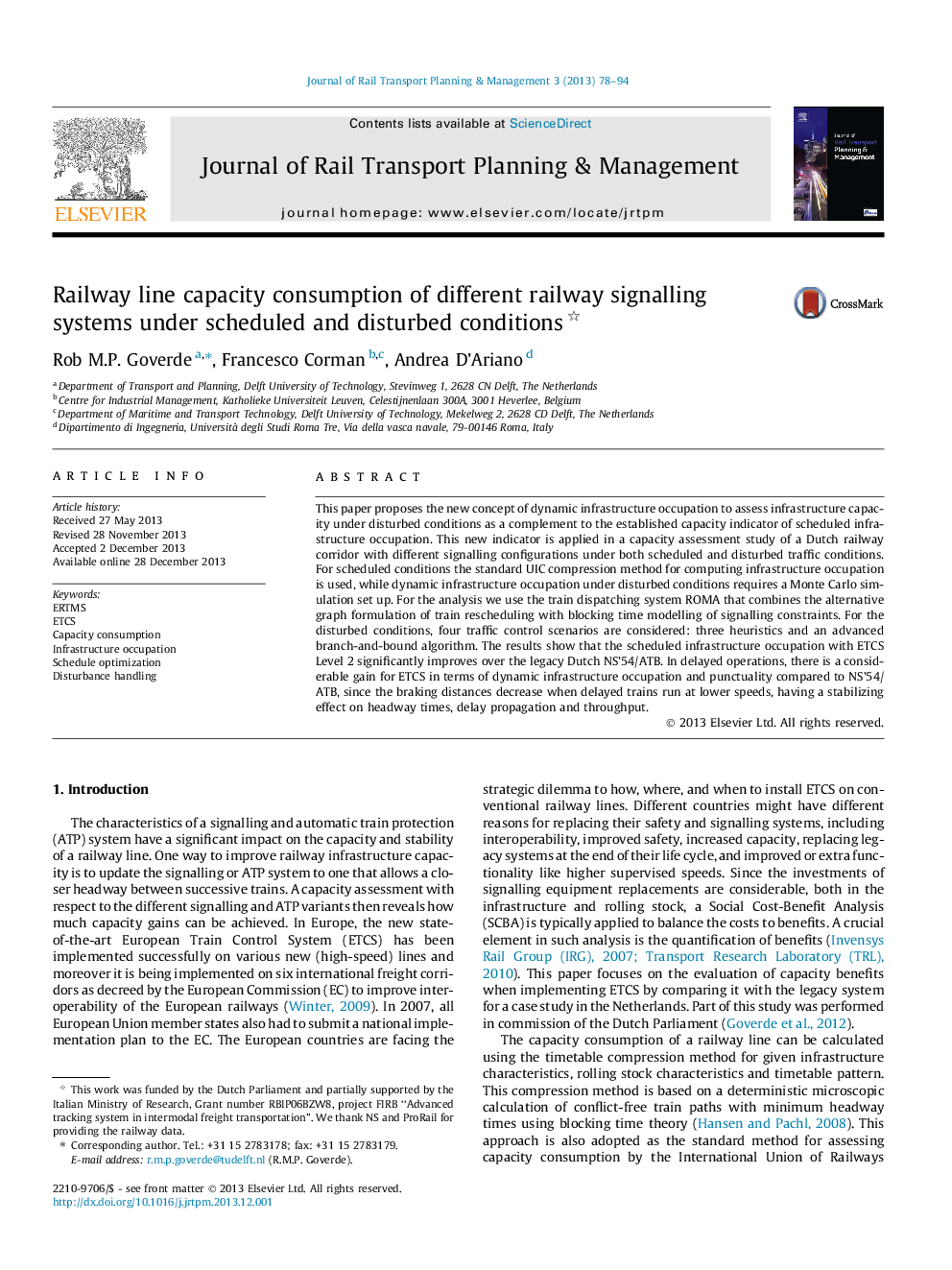| Article ID | Journal | Published Year | Pages | File Type |
|---|---|---|---|---|
| 10289174 | Journal of Rail Transport Planning & Management | 2013 | 17 Pages |
Abstract
This paper proposes the new concept of dynamic infrastructure occupation to assess infrastructure capacity under disturbed conditions as a complement to the established capacity indicator of scheduled infrastructure occupation. This new indicator is applied in a capacity assessment study of a Dutch railway corridor with different signalling configurations under both scheduled and disturbed traffic conditions. For scheduled conditions the standard UIC compression method for computing infrastructure occupation is used, while dynamic infrastructure occupation under disturbed conditions requires a Monte Carlo simulation set up. For the analysis we use the train dispatching system ROMA that combines the alternative graph formulation of train rescheduling with blocking time modelling of signalling constraints. For the disturbed conditions, four traffic control scenarios are considered: three heuristics and an advanced branch-and-bound algorithm. The results show that the scheduled infrastructure occupation with ETCS Level 2 significantly improves over the legacy Dutch NS'54/ATB. In delayed operations, there is a considerable gain for ETCS in terms of dynamic infrastructure occupation and punctuality compared to NS'54/ATB, since the braking distances decrease when delayed trains run at lower speeds, having a stabilizing effect on headway times, delay propagation and throughput.
Keywords
Related Topics
Physical Sciences and Engineering
Computer Science
Computer Science Applications
Authors
Rob M.P. Goverde, Francesco Corman, Andrea D'Ariano,
